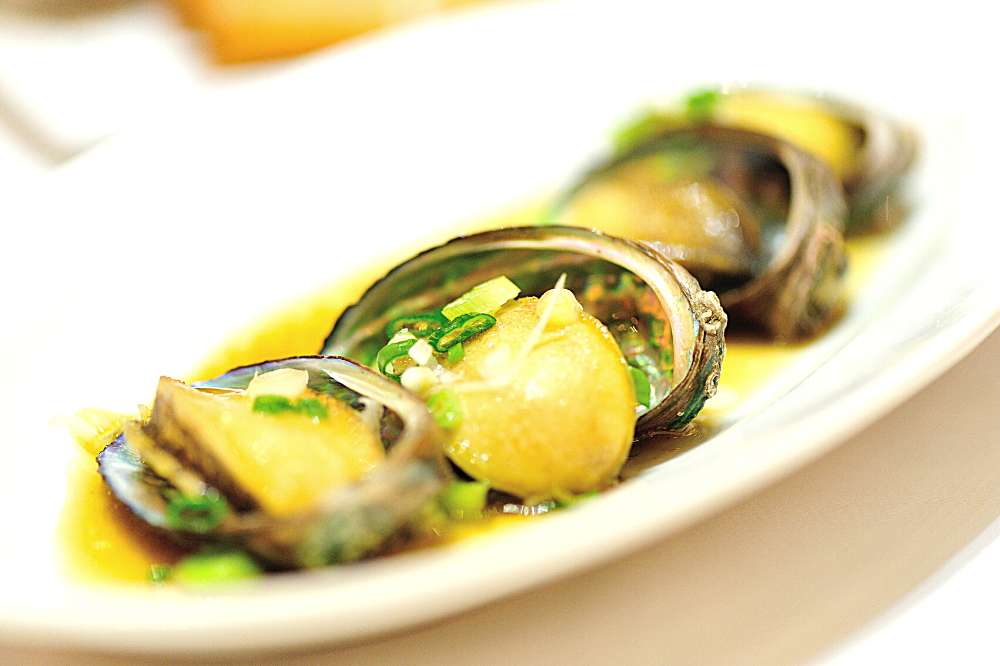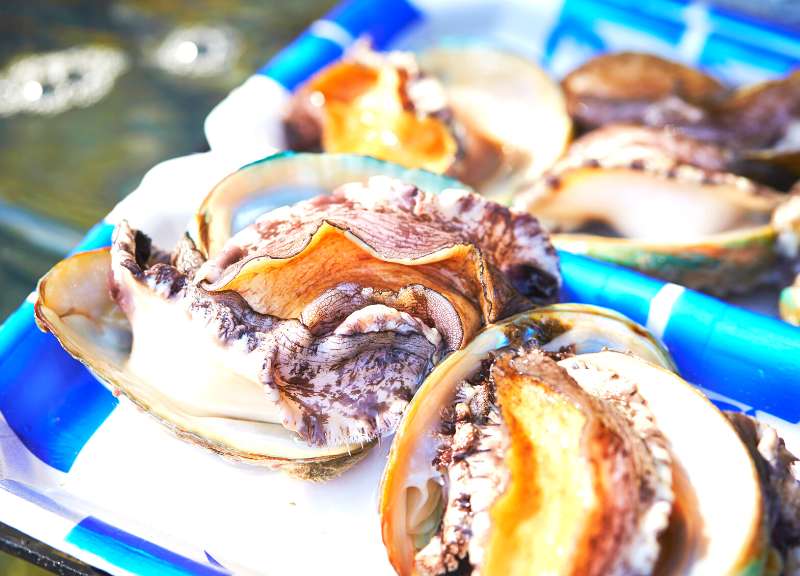Abalone is a delicacy enjoyed by seafood lovers worldwide. It’s an incredibly versatile ingredient, lending itself to various cooking methods, including baking, frying, and boiling.
But can you steam abalone in a steamer?
This post will explore the answer to this question in detail.
Let’s get into it!
Can You Steam Abalone In A Steamer?

The short answer is yes – you can steam abalone in a steamer! Steaming is an ideal way to cook these mollusks as it helps them retain their tenderness and flavor while ensuring that they are cooked uniformly throughout.
When done correctly, steamed abalones should have a light but pleasantly chewy texture with delicate flavors that perfectly complement any accompanying sides or sauces.
Steaming Vs. Frying Abalone
When it comes to preparing abalone, there are two main methods: steaming and frying. Each has advantages and disadvantages, so people must decide which is better for them based on their preferences.
Pros of Steaming Abalone
Steaming abalone is an excellent way to maintain the more delicate flavors of the meat without overcooking it. It also helps keep the natural moisture content of the seafood.
The cooking process also takes little time, meaning you can prepare your meal quicker than with other techniques.
Furthermore, since no oil is involved in this method, steamed abalone tends to be a healthier option than fried abalone dishes.
See also: Can You Steam Apples In A Steamer?
Cons of Steaming Abalone
One downside to steaming abalone is that it can produce a tough or rubbery texture if cooked too long or at too high a temperature.
Additionally, some people prefer crispier textures when they eat seafood dishes like these; as such, they may find steamed versions less satisfying overall due to the lack of crunchiness in fried options.
Pros of Frying Abalone

Frying offers an alternative preparation for those looking for something different from regular steamed recipes while keeping all the flavor intact inside each piece of seafood – plus adding an extra crunchy texture.
This cooking technique also requires much less time than other methods like baking or boiling. It could dry out your food before it’s cooked properly, resulting in poor taste quality afterward.
Cons Of Frying Abalones
Unfortunately, though, deep-frying foods often add unnecessary fat content to meals. Also, they have much higher calories when compared to traditional preparations such as steaming.
Oils used during deep-fries contain unhealthy trans fats which can raise bad cholesterol levels within our bodies over long periods if consumed regularly.
This cooking could be better for health-conscious individuals who carefully look after their dietary needs.
See also: Can You Steam Bacon In A Steamer?
What is the best way to prepare abalone?
Before beginning your steaming process, preparing your abalones correctly first is essential.
Start by rinsing them off under cold running water, then use kitchen scissors or tweezers to remove any remaining bits of shell from the surface.
If desired, you can also carefully trim any excess muscle on the inside before patting it dry with a paper towel.
Steaming
Next, you’ll need to steam your abalones. This is best done in a covered pot or steamer basket with 1 inch of boiling water and a lid that fits securely.
Place the abalones in the pot or basket, making sure not to overcrowd them – give them some space.
Then cover it with the lid and let it steam for about 5 minutes until they become tender.
Steaming Time And Temperature
It’s important to take your time when preparing abalones. Allowing adequate time for them to absorb moisture from within fully is key to achieving optimal results.
Aim for 10 minutes per side at medium heat (around 350-400°F).
If you want more intense seasoning, consider tossing some aromatics like garlic, ginger, and shallots into your pot during cooking.
Serving Suggestions
Once cooked, there are many delicious ways to serve up your abalone.
For an Asian-inspired twist, try tossing into soy sauce and spring onions before serving hot over steamed white rice.
Alternatively, you can also bread and fry them as tempura for a crunchy texture contrast. They make great additions to salads or sandwiches too.
Try marinating them in garlic butter before grilling them on skewers for a succulent seafood experience.
See also: Can You Steam Brussels Sprouts In A Steamer?
Choosing Your Steamer For Steaming Abalone
Abalone steaming is a popular cooking method to bring out the best in this shellfish. When selecting the right type of steamer for abalone, you have two main options: electric steamers and stove-top steamers.
Food Steamers

Electric steamers are sold as single units or complete sets with several stackable containers perfect for multi-tiered steaming. These often come with adjustable timers to set how long your abalone should be cooked.
Stovetop
Stove-top steamers usually consist of metal or bamboo baskets placed over boiling water in a pot. This option is great if you’re looking for more control over the heat and moisture levels since you can adjust them manually while cooking.
Microwave
You can also try using your microwave to steam the abalone for a fast option. This method requires less water than traditional steaming and much less cooking time.
Simply place your abalones in a microwave-safe container with some broth or water and cook for 3 minutes on high heat.
See also: Can You Steam Beets In A Steamer?
FAQs
How Do You Tenderize Abalone?
Abalone can be tenderized by pounding it with a mallet or rolling pin, marinating it in an acidic liquid such as lemon juice or vinegar, and (or) soaking it in milk.
Why Is Abalone So Chewy?
Abalone is chewy because it has a tough muscle structure that requires slow cooking to tenderize. The texture of the abalone can also be improved by pounding or marinating before cooking.
Can Abalone Be Overcooked?
Yes, abalone can be overcooked if you prefer it like that. But, if you cook too long, the meat will become tough and rubbery.
How Do You Soak Abalone?
Abalone should be soaked in cold water for at least 30 minutes before cooking. This helps to soften the meat and remove any sand or grit that may be present.
How Do I Make My Abalone Shiny?
To make abalone shells shiny, you can use a soft cloth and some mineral oil. Rub the cloth in small circles over the surface of the shell to remove any dirt or debris.
Then, apply a few drops of mineral oil onto the cloth and rub them into the shell in circular motions until they are evenly distributed. Allow it to sit for several minutes before buffing off with a clean, dry cloth.
Conclusion
Can you steam abalone in a food steamer? The answer is yes! Abalone can be steamed.
The key is to ensure you use the right ingredients and cooking methods so that it cooks properly, evenly, and becomes tender without drying out.
With patience and practice, anyone can steam abalone like a professional chef.
So go ahead – give it a try!
Happy cooking!
